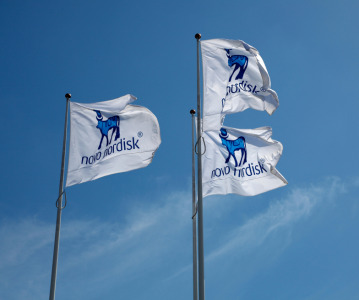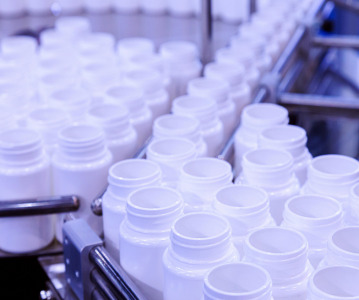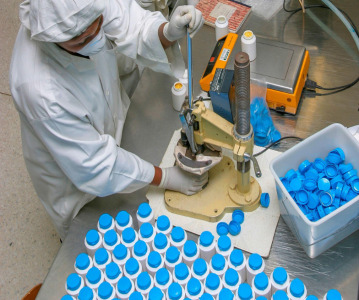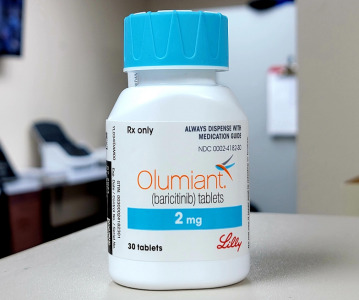TESSA technology for robust and reproducible AAV manufacture at scale
.jpg)
Novel, plasmid-free manufacturing system reduces the cost of goods and improves AAV quality to enable development of safer gene therapies.
OXGENE, a designer and developer of scalable gene therapy technologies, has launched its scalable, plasmid-free manufacturing system for adeno-associated virus (AAV).
AAV, is a popular choice of viral vector to deliver gene therapies to patients, owing to its low immunogenicity, favourable safety profile and the ease with which it transduces numerous cell and tissue types.
Manufacturing systems, however, have not kept pace with biological advances, leaving these therapies costly, difficult to produce at scale, and subject to inherent batch-to-batch variability, thus representing a serious challenge to regulators and health authorities with regard to approving these treatments for clinical use.
OXGENE claims its TESSA technology overcomes manufacturing obstacles by taking advantage of AAV’s natural relationship with another virus — the adenovirus. In nature, AAV co-exists with adenovirus, which provides the ‘help’ AAV needs to replicate.
Yet, as well as replicating the AAV, the adenovirus also replicates itself, leading to high levels of adenoviral contamination if this process is translated to an industrial context.
OXGENE says it is confident it has addressed these challenges by manipulating the adenoviral life cycle so that it can still provide high quality help for AAV replication, but is unable to manufacture itself, reducing adenoviral contamination by 99.99% in a manufacturing run.
Integration of the AAV rep and cap genes into the adenoviral vector means that everything required for AAV production, except the AAV genome, can be provided in a single viral vector.
Meanwhile, the AAV genome can either be encoded within a second TESSA vector, in a plasmid, or within an AAV particle itself. Using two TESSA vectors improves yields of AAV2 by 40-fold, accompanied by a 2000-fold increase in particle infectivity compared to a standard three-plasmid manufacturing approach.
Once this first AAV seed stock has been produced, co-infecting cells with this AAV alongside another TESSA vector can further amplify the AAV in a simple, reproducible and scalable manner, removing the reliance on expensive and limiting plasmids for AAV manufacture.
According to OXGENE’s CEO, Dr Ryan Cawood, the gene therapy industry’s reliance on plasmids is a "major limitation for robust and reproducible large-scale AAV manufacture".
He commented: "By taking a ‘back to nature’ approach to rethink AAV production from the ground up, we’ve developed a truly innovative technology that we expect to transform the way AAV is manufactured.
Related News
-
News Women in Pharma: Moving beyond discussions and into best practice at CPHI Milan
In this second CPHI Milan special of our monthly series, we cover the key takeaways from the Diversity & Wellbeing track held on October 10, 2024. -
News AstraZeneca invests in AI collaboration for cancer drug trials
The British-Swedish pharmaceutical giant is partnering with biotechnology firm Immunai Inc to increase the efficiency of some cancer drug trials. -
News Ozempic and Wegovy prices questioned as Novo Nordisk faces US Senate hearing
The CEO of Novo Nordisk was grilled during a US Senate committee hearing on September 24, 2024, in which the exorbitant prices of the Danish company’s blockbuster drugs Ozempic and Wegovy were called into question. -
News The BIOSECURE Act: implications for the pharma supply chain
On September 9, 2024, the US House of Representatives voted to pass the bill titled the BIOSECURE Act (the Act), which lists several Chinese companies in the pharmaceutical supply chain. The Act will prohibit American companies from contracting or doin... -
News On Track at CPHI Milan: Thermo Fisher Scientific Track Sponsor interview
With CPHI Milan just around the corner, we sat down with some of the sponsors for this year’s conference tracks to discuss the most pressing topics in pharma. -
News CPHI Milan Speaker Spotlight: Pharma Manufacturing and Localisation in Africa
In the run-up to CPHI Milan, we sit down with some of the experts and thought-leaders speaking at this year’s conferences. -
News US BIOSECURE Act passed by US House of Representatives
The controversial act, which has already impacted several foreign companies operating in the US, was passed by the House of Representatives on September 9, 2024. It is now headed for the US Senate before it can be signed into law by President Joe Biden... -
News Eli Lilly licenses rheumatoid arthritis manufacturing in Africa
American pharmaceutical company Eli Lilly has signed a partnership with Egyptian organisation Eva Pharma to localise manufacturing of rheumatoid arthritis treatments in Africa.
Position your company at the heart of the global Pharma industry with a CPHI Online membership
-
Your products and solutions visible to thousands of visitors within the largest Pharma marketplace
-
Generate high-quality, engaged leads for your business, all year round
-
Promote your business as the industry’s thought-leader by hosting your reports, brochures and videos within your profile
-
Your company’s profile boosted at all participating CPHI events
-
An easy-to-use platform with a detailed dashboard showing your leads and performance
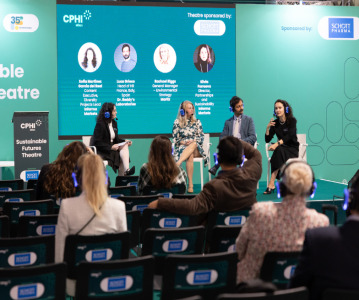
.png)
